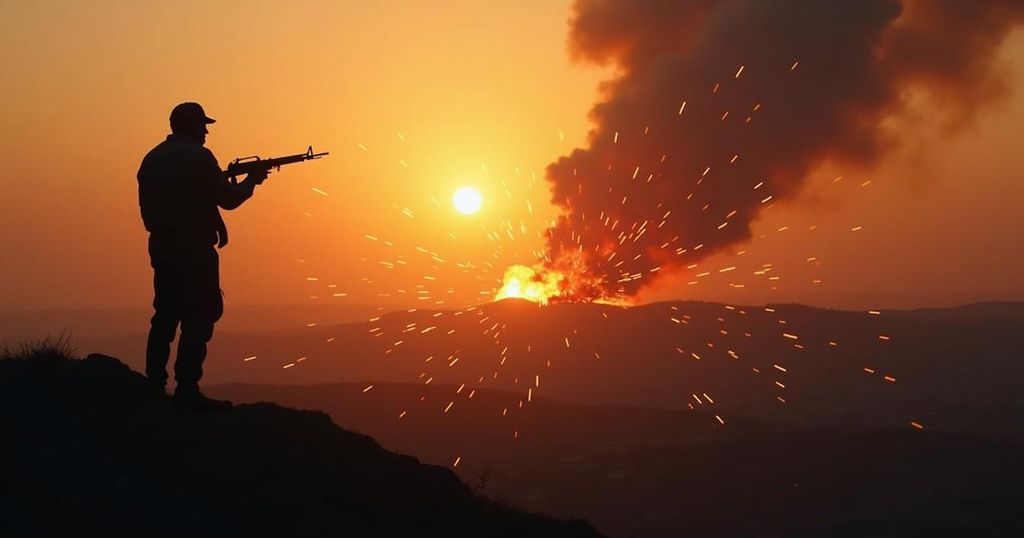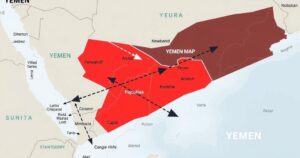Israeli Airstrikes Target Hezbollah Leaders and Houthi Positions Amid Rising Regional Tensions

Israeli airstrikes have killed multiple senior Hezbollah officials, including Nabil Kaouk and Hassan Nasrallah, amid ongoing military operations to destabilize the group. Concurrently, Israel targeted Houthi facilities in Yemen following missile attacks against its territory. The strikes have resulted in significant casualties and a humanitarian crisis in Lebanon, escalating regional tensions and raising concerns over a potential broader conflict.
The Israeli military announced the killing of another senior Hezbollah official, Nabil Kaouk, as part of its ongoing airstrike campaign aimed at crippling the Lebanese militant group. This operation follows a series of strikes that have recently targeted prominent Hezbollah leaders, including the group’s overall leader, Hassan Nasrallah, who was killed in a recent attack in Beirut. Kaouk’s death marks the seventh high-ranking member of Hezbollah to be killed in Israeli strikes in a span of just over a week, illustrating the severe impact on the group’s leadership structure. In addition to the strikes in Lebanon, the Israeli military also targeted Houthi facilities in Yemen. This escalation comes in response to a ballistic missile attack launched by the Houthis against Israel, coinciding with the arrival of Israeli Prime Minister Benjamin Netanyahu. The Israeli strikes specifically targeted critical infrastructure, including power plants and ports in the city of Hodeida, a strategic stronghold for the Houthis. Concerns have been raised regarding the aftermath of these military actions. The White House national security spokesman, John Kirby, stated that while the airstrikes have significantly weakened Hezbollah’s command structure, the group is anticipated to attempt a quick recovery. Kirby emphasized the uncertain dynamics in the region and acknowledged the vast humanitarian toll, with reports indicating at least 1,030 fatalities in Lebanon due to the ongoing operations, including deaths among women and children. Moreover, the strikes have led to a mass displacement crisis, with hundreds of thousands of people displaced from their homes. In the context of escalating tensions, Hezbollah continues to respond with rocket attacks on northern Israel, although such assaults have thus far resulted in no Israeli casualties since the onset of the recent airstrikes on leadership figures. Both Hezbollah and Hamas—who share a strained but aligned stance against Israel—have intensified their military responses amidst the ongoing conflict. As the situation evolves, fears of a broader regional conflict loom, with Israel expressing its resolve to return displaced citizens to communities in the north.
The current situation stems from a significant escalation in violence between Israel and Hezbollah, particularly following Hamas’ attack on October 7, which has prompted Hezbollah to increase rocket fire into northern Israel. Hezbollah, an Iranian-backed militia and political party, has a long-standing history of conflict with Israel, including a notable war in 2006. The recent Israeli strikes are aimed at dismantling the group’s hierarchy and military capabilities, a strategy bolstered by recent successes in targeting key leaders. This military offensive has resulted in substantial casualties and displacements among the Lebanese population, igniting widespread humanitarian concerns.
In summary, the recent Israeli airstrikes targeting Hezbollah’s leadership represent a significant escalation in the ongoing conflict. The falls of key Hezbollah figures like Nabil Kaouk and Hassan Nasrallah indicate severe disruptions within the group’s operational hierarchy. Concurrently, Israeli military actions against Houthi positions in Yemen reflect a broader strategy to respond to perceived threats. These developments contribute to rising tensions in the region, with humanitarian implications that must not be overlooked, as countless civilians bear the brunt of the conflict.
Original Source: www.pbs.org








